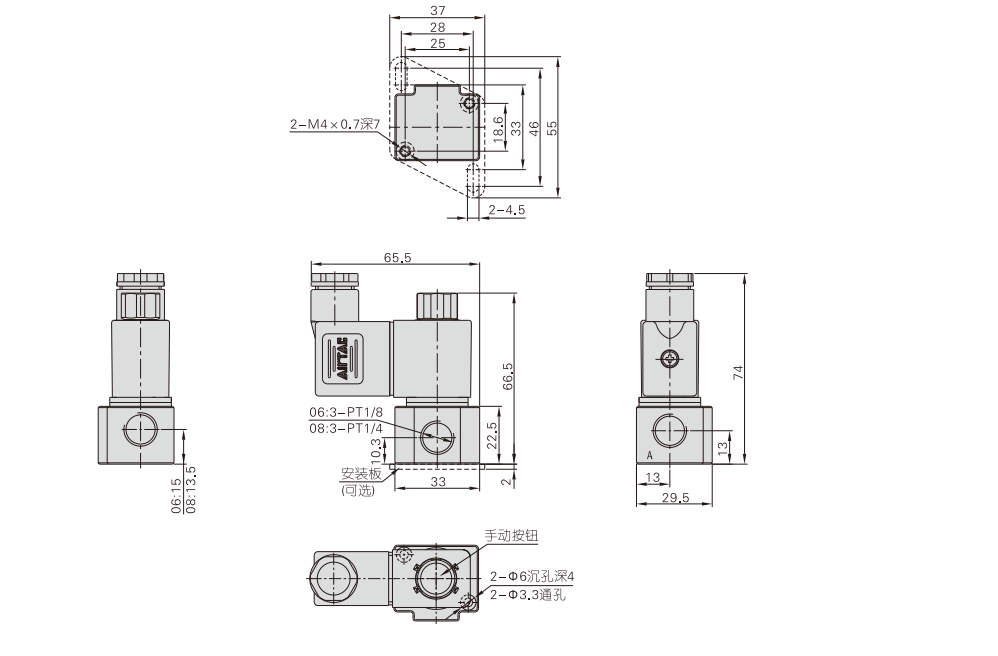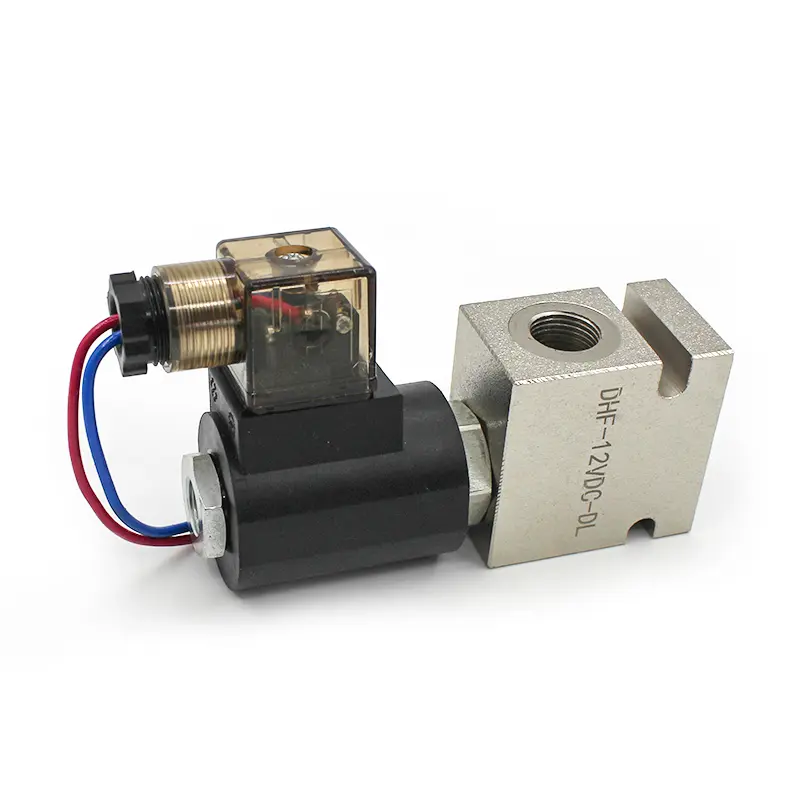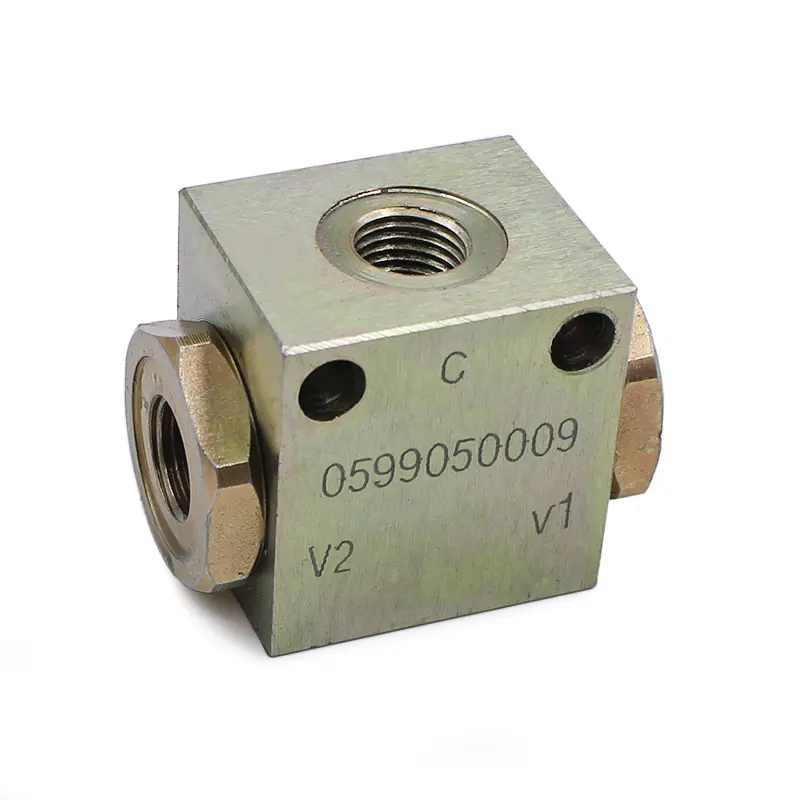
How to Select the Right Counterbalance Valve for Your Hydraulic System
2025-01-02Selecting the correct counterbalance valve is crucial for ensuring the safety, efficiency, and longevity of your hydraulic system. This article will guide you through the key considerations when choosing a counterbalance valve, explaining its function and why this component is so vital. Understanding these valves is essential for anyone working with hydraulic systems, from machinery manufacturers to system integrators.
1. What is a Counterbalance Valve and How Does It Work in a Hydraulic System?
A counterbalance valve, often referred to as a load-holding valve, is a crucial component in many hydraulic systems. Imagine a crane lifting a heavy load. Without a counterbalance valve, gravity would cause the load to fall uncontrollably when the directional valve is shifted to lower it. The counterbalance valve's primary function is to create back pressure on the outlet of a hydraulic actuator (like a cylinder or motor) to prevent it from running away due to an overrunning load.
Essentially, a counterbalance valve is a pilot-operated check valve with an adjustable pressure setting. This means the valve opens when sufficient pilot pressure is applied. Without this pilot pressure, the valve remains closed, preventing flow from the directional valves and securely holding the load in place. This controlled release is vital for smooth and safe operation. Think of it as a smart brake for your hydraulic system.
2. Why Use Counterbalance Valves? Understanding Their Key Benefits
The benefits of incorporating counterbalance valves into your hydraulic system are numerous and significant. Primarily, they enhance safety by preventing loads from dropping unexpectedly. This is especially critical in applications involving overhead loads or moving heavy machinery. By managing back pressure, these valves provide a smooth and controlled descent, eliminating jerky movements that can damage equipment or pose a safety hazard.
Beyond safety, counterbalance valves improve the efficiency and lifespan of your hydraulic system. They prevent cavitation in hydraulic motors by maintaining back pressure, which ensures the motor doesn't run ahead of the pump. This reduces wear and tear on components. Furthermore, the precise control offered by these valves contributes to more accurate and reliable operation of machinery. For instance, in an excavator arm, a counterbalance valve ensures the arm doesn't drop suddenly, allowing for precise digging and lifting. We've seen firsthand how counterbalance valves perform vital roles in maintaining stable operations.
3. Where Are Counterbalance Valves Used? Exploring Common Applications
The application of counterbalance valves spans a wide range of industries and machinery. You'll commonly find them in construction equipment like excavators, cranes, and telehandlers, where controlling heavy loads is paramount. In industrial settings, they are integral to hydraulic presses, injection molding machines, and various lifting and material handling systems. Even in mobile hydraulics, such as in agricultural machinery and forestry equipment, counterbalance valves are used to ensure controlled movement and prevent runaway loads on implements.
Consider the use of counterbalance valves is vehicles like forklifts. These valves help relieve the pressure and allow for the controlled lowering of the forks, even with a heavy pallet. The versatility of these valves provide solutions for any application where a hydraulic actuator needs to hold a load against gravity or external forces. Our customers who manufacture industrial equipment often rely on the reliability of these valves.
4. What Are the Different Types of Counterbalance Valves Available?
When you select a counterbalance valve, you'll encounter several different types, each designed for specific applications. A standard counterbalance valve is the most common type, offering basic load-holding and controlled lowering functions. These often feature a free-flow check valve, allowing unrestricted flow in one direction.
| Valve Type | Description | Common Applications |
|---|---|---|
| Standard Counterbalance Valve | Basic load holding and controlled lowering with adjustable pressure setting. | General hydraulic circuits, cylinders, and motors. |
| Pilot-Operated Relief Valve | Functions as a counterbalance valve but also provides pressure relief. | Systems requiring overload protection in addition to load holding. |
| Dual Counterbalance Valve | Two counterbalance functions integrated into one valve body, often used for double-acting cylinders. | Hydraulic cylinders with opposing loads. |
| Overcenter Valve | Similar to a counterbalance valve, but typically with a higher pressure setting. | Applications with significant overrunning loads. |
A two-stage valve incorporates a pilot stage and a main stage, allowing for more precise control and higher flow capacities. For applications requiring overload protection, a pilot-operated relief valve is a suitable choice as it combines the functions of a counterbalance valve and a relief valve. There are also specialized counterbalance valves with features like integral shuttle valves or anti-cavitation checks. Understanding these types of counterbalance valves is key to making the right selection.

5. What is Pilot Pressure and How Does It Affect the Counterbalance Valve?
Pilot pressure is the external pressure signal that acts on the pilot section of the counterbalance valve, prompting the valve to open the valve. This pressure must overcome the valve's internal spring force and the back pressure acting on the outlet port. The pilot pressure required to open the valve is typically a fraction of the load-holding pressure, often expressed as a ratio (e.g., 3:1 or 4:1). This means that a smaller pilot pressure can control a much larger load pressure.
The magnitude of the pilot pressure directly influences when the valve opens. Insufficient pilot pressure will prevent the valve from opening, while excessive pressure could lead to abrupt movement. Understanding the relationship between the pilot pressure and the counterbalance pressure setting is crucial for proper system design and operation. For example, if your counterbalance pressure is set to 3000 PSI and the pilot ratio is 4:1, approximately 750 PSI of pilot pressure will be required to open the valve.
6. How Do Check Valves Integrate with Counterbalance Valves?
Check valves often work in conjunction with counterbalance valves in a hydraulic system. Many standard counterbalance valve designs incorporate an integral free-flow check. This check valve allows oil to flow freely into the actuator, enabling rapid extension of a cylinder, for example. However, flow in the opposite direction, which would allow the load to fall, is blocked until sufficient pilot pressure is applied to open the counterbalance valve.
The check valves ensure unidirectional flow for specific operations while the counterbalance valve provides the controlled resistance for load holding. In essence, the check valves handle the 'go' direction, and the counterbalance valve manages the 'stop' and controlled 'descent'. This combination is common in applications where quick extension and controlled retraction are necessary.

7. Why are Load-Holding Valves Important and How Do They Relate to Counterbalance Valves?
The term "load-holding valve" is often used interchangeably with "counterbalance valve". As the name suggests, these valves are critical for safely holding a load in a hydraulic circuit. Without a load-holding valve, the weight of the load would cause uncontrolled movement when the directional valve is in the neutral position or if a hose were to rupture.
Think of a hydraulic lift. The load-holding valve ensures the platform stays securely in place even when the pump is not actively supplying pressure. While a relief valve can protect against overpressure, it doesn't prevent load drift. Therefore, for applications requiring secure load holding, the counterbalance valve, acting as a load-holding valve, is indispensable. Sometimes, you might use a basic load-holding valve, but for more precise control, a fully adjustable counterbalance valve is preferred.
8. What Role Do These Valves Play in Hydraulic Circuit Safety?
Valves in hydraulic circuits are fundamental for safety, and counterbalance valves are a prime example. They prevent dangerous situations by ensuring loads are held securely and lowered in a controlled manner. This is particularly important in applications where human safety is at risk, such as in construction and lifting equipment. The controlled movement provided by counterbalance valves prevents sudden drops or jerky motions that could cause accidents or damage.
Furthermore, by preventing cavitation in hydraulic motors, these valves help relieve stress on other components in the hydraulic system, contributing to the overall safety and reliability of the system. Implementing directional control and counterbalance properly is a cornerstone of safe hydraulic system design.
9. How Can You Choose a Counterbalance Valve That Meets Your Specific Needs?
To choose a counterbalance valve effectively, you need to consider several factors. First, determine the maximum load the valve will need to hold. This will help you select a valve with the appropriate pressure rating. Next, consider the required flow rate of your system. The valve's flow capacity must be sufficient to handle the maximum flow without causing excessive pressure drop.
The pilot ratio is another crucial factor. A lower pilot ratio requires higher pilot pressure required to open, while a higher ratio requires less. The mounting style and port sizes must also be compatible with your system. Finally, consider any specific requirements, such as the need for an integrated free-flow check or overload protection. Understanding your system's operating parameters is essential when you select a counterbalance valve. You might find that a standard or part-balanced valve suits your needs, or perhaps a fully balanced valve is necessary for more demanding applications. It's also important to consider if your system is designed using closed-centre directional valves or open-centre valves, as this can influence your selection. If using directional valves to the cylinder, the counterbalance valve placement is critical.

10. What Happens If You Don't Select a Counterbalance Valve Properly?
Failing to select a counterbalance valve correctly can lead to a range of problems, from inefficient operation to dangerous failures. An undersized valve might not be able to handle the required flow rate, leading to pressure drops and reduced performance. If the pressure setting is too low, the load might not be held securely, resulting in load drift or even a sudden drop. Conversely, if the pressure setting is too high, it might require excessive pilot pressure to open the valve, leading to sluggish operation.
In severe cases, an improperly selected or failing counterbalance valve can contribute to accidents, equipment damage, and costly downtime. Imagine a crane with an incorrectly specified counterbalance valve; the consequences could be catastrophic. Therefore, taking the time to choose a counterbalance valve that precisely matches your system's requirements is a critical investment in safety and efficiency. Sometimes, relying solely on reliefs on the directional valve is insufficient for proper load control. For instance, in proportional systems create back pressure, a correctly sized counterbalance valve is essential.
Key Takeaways:
- Counterbalance valves are essential for safely holding and controlling overrunning loads in hydraulic systems.
- They work by creating back pressure and require pilot pressure to open the valve.
- Different types of counterbalance valves are available for various applications.
- Proper selection requires considering load, flow rate, pilot ratio, and system design.
- Incorrectly selected counterbalance valves can lead to inefficiency, damage, and safety hazards.
- These valves play an integral role in the overall safety and performance of hydraulic circuits.
- Understanding the relationship between directional valve and the counterbalance is crucial.
- Check valves often integrate with counterbalance valves for controlled flow.
- Load-holding valve is another common term for a counterbalance valve.
- Always prioritize safety and precision when selecting a counterbalance valve.
For high-quality and reliable hydraulic valves, including a wide range of counterbalance valves, consider our selection of hydraulic valves. We offer solutions for various applications, ensuring your hydraulic systems operate safely and efficiently. You can also explore our specific Relief Valve-Cartridge Type or our range of Double Pilot Operated Check Valves for related components. Remember, choosing the right components is crucial for optimal performance.




